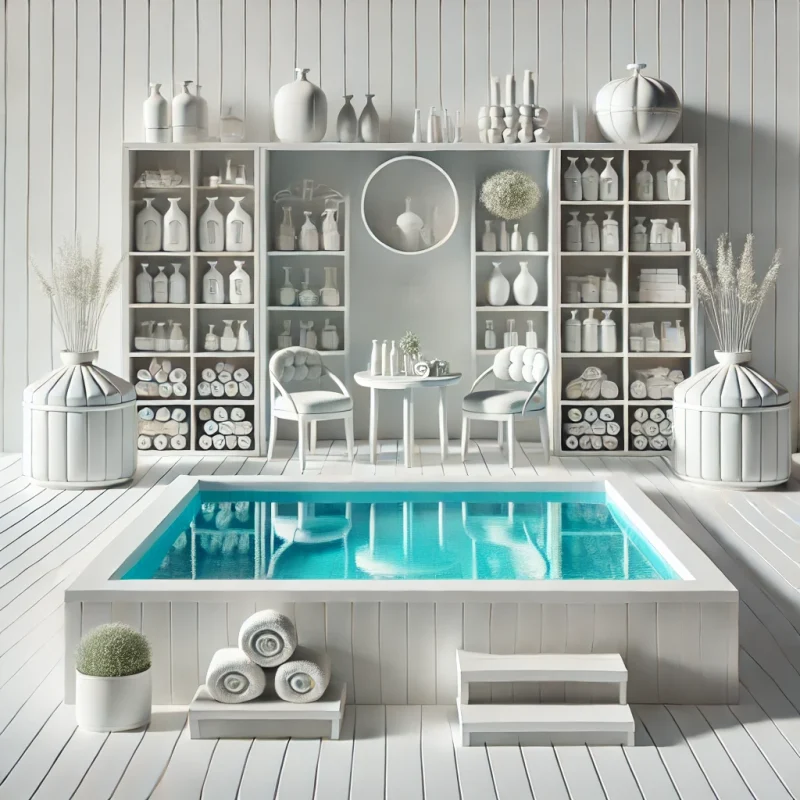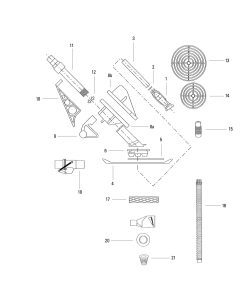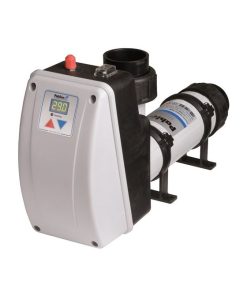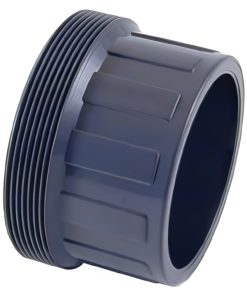Hottub, Swimming Pool
Commercial vs Domestic Spa Pools: Understanding the Key Differences for Safety
Understanding the Key Differences for Safety Between Commercial and Domestic Spa Pools
The proper safety and compliance of spa pools depends on knowing the differences between commercial and domestic systems. The requirements for a spa pool in a busy hotel differ substantially from those for a hot tub in private homes or holiday rentals. The HSE guidance [38] helps us distinguish these fundamental differences in this blog post.
Public places such as hotels, leisure centres, health clubs and beauty salons house Commercial-Type Spa Pools [39]. These systems are designed to accommodate a large number of bathers and are subject to strict health and safety regulations. These systems use more robust design components to manage the increased use and associated hazards [40]. Key characteristics of these include [40]:
Deck-Level Overflow: Surface water constantly flows from the spa into perimeter channels that transport it to the balance tank.
Higher Bather Loads: Designed to accommodate a greater number of users for longer periods, requiring increased levels of monitoring and control [40].
Separate Filter and Chemical Feeder: A continuous chemical feeder maintains consistent water treatment and a separate filtration unit removes contaminants.
Balance Tank and Plant Room: These systems use a balance tank to control water level changes and have dedicated filtration and water treatment equipment rooms.
The typical use of Domestic-Type Spa Pools is in private residences or holiday accommodations. Such spa pools also come under health and safety legislation when they are used as part of a business activity [41]. Spa pools of this type normally have lower usage and less complicated construction [42]. The main features of domestic-type spas are summarized in [14, 24] as follows:
Freeboard and Skimmer System: A system where the water level is below the top of the spa, and surface water is removed through a skimmer [43].
Lower Bather Loads: Designed for a small, discrete group of users, typically a single family or group [42].
Inline Disinfectant Feeder: Inline disinfectant feeders with bromine or chlorine are typically used for water treatment [14].
Water Replacement: Water should be changed after each group of users or weekly, whichever is sooner [14].
Rigid or Inflatable Structure: Can be either a rigid or inflatable/foam filled structure [14].
Why do these differences matter?
The type of spa pool has a direct impact on the level of risk and the control measures needed. Commercial systems need more stringent management because of the higher bather load and potential for higher contamination levels [39]. Domestic systems need proper maintenance especially if they are used as part of a business but it is often on a smaller scale [41].
Frequently Asked Questions (FAQs)
Can a domestic hot tub be used for a large party?
A domestic hot tub should not be used for parties or large gatherings because it exceeds the design bather load and increases the risk of contamination [44].
Are the regulations for a spa pool in a hotel the same as for a spa in a private home?
Hotels have stricter regulations for their commercial spa pools than private homes or domestic hot tubs that are not used for business purposes [39].
What is a “bather load?”
Bather load is the number of people in the spa at any time. It is a critical factor in determining the operational requirements for water treatment and maintenance [44, 45].
Why do commercial spas need balance tanks?
Balance tanks function to replace the water lost by bathers and provide additional water capacity during busy times to maintain a steady water level [43, 46].
The most suitable water treatment system for domestic hot tubs is which type?
Hot tub water treatment in domestic settings includes the use of inline disinfectant feeders which employ bromine or chlorine while users must change the water either weekly or after each user session [14].
Knowing these differences helps you select appropriate control measures that match your spa pool type and its usage purpose.


















